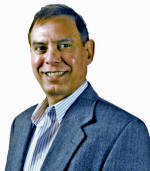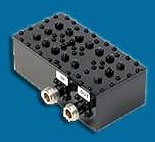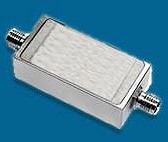Anatech Electronics Newsletter - January 2018 |

Press Release Archives: 2024 | 2023 | 2022 | 2021 |2020 2019 | 2018 | 2017 | 2016 | 2015 2014 | 2013 | 2012 | 2011 | 2010 2009 | 2008 | 2007 | 2006 | 2005 Content is copyright of company represented. Page format, custom text and images are RF Cafe copyright - do not distribute. 
Anatech Electronics, a manufacturer of RF and microwave filters, has published its January newsletter. In it, Sam Benzacar writes in "The RF and Microwave Landscape in 2018" about his vision of what's to come this year based on current indicators. Both commercial and military industries stand to fare extremely well as technology advances and the economy shows signs of performing even better in 2018 than it did in 2017. We're still waiting for "true" 5G to be implemented, but there are many prerequisites that are maturing rapidly. Take a few moments to read Sam's thoughts. A Word from Sam Benzacar  The RF and Microwave Landscape in 2018 By Sam Benzacar Last month in this column I reflected on some of the major "field and waves"-centric events that occurred in 2017. As we move into 2018, I've once again gone to the mountain in the hope of revealing what I think will be big in the coming year, and there are plenty of topics to choose from. To sum this up, I'd say we can look forward to more of the same, but better, in 2018 especially if you happen to work in or sell into the wireless industry. 5G may not yet be upon us in name but trials are sprouting up in more places as the carriers and major telecom industry manufacturers try out their new millimeter-wave, super-massive-MIMO, and assorted other technologies that will be necessary to achieve all that's been promised for this next wireless generation. At its current pace, which is screaming along, I think the first element of 5G that will appear are Fixed Wireless Access (FWA) 28-GHz systems designed to deliver broadband to homes and businesses. I base this conclusion on what AT&T and Verizon have been proclaiming for a year, which is small-scale deployments in various cities later in 2018. Conceptually speaking, FWA is nothing new: it's simply point-to-point and point-to-multipoint communications, which has been a staple of telecom business for more than 50 years. In fact, bringing video programming to the home has been tried before in the 1990s with the Local Multipoint Distribution Service (LMDS) that ultimately crashed and burned. But it's now two decades later, and so much has changed, from streaming of content via broadband to far more advanced and less expensive millimeter-wave hardware. It's going to awhile longer before 5G makes it into cellular networks, but there's no crying need for 1-Gb/s download speeds right now, anyway. LTE-Advanced and Advanced Pro are already rolling out and delivering speeds higher than what's need to stream HD video. My projection: Once the standards for 5G are finalized at the World Radio Conference in 2019, we'll see limited cellular 5G deployments relatively soon thereafter. The Internet of Things is finally taking off in industrial, civic, healthcare, consumer, and other markets, and as without wireless communications IoT could not exist, 2018 should be a good year for the RF and microwave companies that made what IoT requires. Right now, that's mostly semiconductors from discrete devices through SoCs, not traditional RF and microwave components. However, the sheer size of this market means that there ought to be some positive benefits for manufacturers of other active passive components as well. The outlook for the defense market has the potential for being very lucrative, as DoD ramps up R&D (and ultimately production) of new EW and radar systems and continues upgrading legacy platforms. The EW sector in particular is getting considerable attention owing to the "reawakening" of the Army to its need to boost EW capabilities. There are, of course, many other applications that collectively produce substantial revenue for our industry, two of which include: • Land mobile radio: AT&T is beginning to roll out the nationwide public safety broadband network (FirstNet) throughout the entire U.S. This will be a massive program that will continue for years and require significant investments in infrastructure as well as fixed and portable radios. FirstNet represents an entirely new market for the RF and microwave industry. • Rural broadband: A sleeper application, the deployment of FWA systems to serve areas not well served by cable or fiber is quite large and growing. A band at 3.5 GHz called (oddly) the Citizens Broadband Radio Service (CBRS) is another new market that is about to be deployed. CBRS will serve rural broadband and assorted other applications nationwide. Taken together these and other applications, including completely modernized over-the-air TV broadcast that we'll cover in an upcoming newsletter, point to a good year for our industry.
What's News...
Report Cites IoT Development Challenges
Another Country for DXCC! Amateur radio operators rejoice: You can now work an entirely new prefix--Baker Island, an atoll in the middle of the Pacific inhabited only by hermit crabs, lizards, and birds. The Dateline DX Association says it will be heading there loaded without equipment for operation in June and will be on the air continuously for 12 days. They hope to log 75,000 contacts during their time on this lonely place. Baker Island ranks four on Club Log's list of places hams say they'd like someone to set up shop, behind the Crouzet archipelago in Antarctica, Norway's Bouvet Island, and – no surprise– North Korea. The call sign will be KH1/KH7Z. More information is available by clicking here.
Public Safety Officials Question Verizon's FirstNet Plans
Check out Our Filter Products
Cavity Band Pass Filters LC Band Pass Filters Cavity Bandstop/Notch Filter About Anatech Electronics Anatech Electronics, Inc. (AEI) specializes in the design and manufacture of standard and custom RF and microwave filters and other passive components and subsystems employed in commercial, industrial, and aerospace and applications. Products are available from an operating frequency range of 10 kHz to 30 GHz and include cavity, ceramic, crystal, LC, and surface acoustic wave (SAW), as well as power combiners/dividers, duplexers and diplexers, directional couplers, terminations, attenuators, circulators, EMI filters, and lightning arrestors. The company's custom products and capabilities are available at www.anatechelectronics.com. Contact: Anatech Electronics, Inc. 70 Outwater Lane Garfield, NJ 07026 (973) 772-4242
Posted January 25, 2018 |
 A study
conducted by Forbes Insights sampled more than 500 executives about their progress in
implementing IoT within their organizations, and among other things asked them to identify
their top challenges. Oddly, issues related to communications, such as connectivity between
IoT devices and to the "outside world" wasn't one of them. However, "quality of IoT technologies
available" was ranked second among companies that considered efforts successful (33%
of responders). The first was cross-departmental cooperation at 35%, and integration
of disparate data was 31%. When asked what technology initiatives their companies were
pursuing, IoT ranked first followed robotics and AI.
A study
conducted by Forbes Insights sampled more than 500 executives about their progress in
implementing IoT within their organizations, and among other things asked them to identify
their top challenges. Oddly, issues related to communications, such as connectivity between
IoT devices and to the "outside world" wasn't one of them. However, "quality of IoT technologies
available" was ranked second among companies that considered efforts successful (33%
of responders). The first was cross-departmental cooperation at 35%, and integration
of disparate data was 31%. When asked what technology initiatives their companies were
pursuing, IoT ranked first followed robotics and AI.  For those of you following the development of FirstNet's
nationwide public safety broadband network, the door to new contenders to build it should
seem to be closed: AT&T won the contract and some states have opted out, choosing
to go it on their own. Verizon was nowhere to be found in the bidding process but now
it seems to have taken a sudden interest, making statements like "our public-safety LTE
core network may be interoperable with the FirstNet system." It also reportedly stated
that its 2018 plans include "introduction of products, services, and other advanced technologies
designed for first responders—all running on the country's only public-safety-grade LTE
network." Neither of these statements are accurate, according to FirstNet board member
Kevin McGinnis, specifically noting that the second statement is "simple not true". McGinnis
wasn't optimistic that Verizon's public-safety core would be interoperable with the FirstNet
core that AT&T will operate, according to an article on urgentcomm.com. "That is
simply a very, very difficult construct," McGinnis said. "It would create extra layers
of complexity in implementing the whole network, and it would create unnecessary security
complexity and risk, in my view."
For those of you following the development of FirstNet's
nationwide public safety broadband network, the door to new contenders to build it should
seem to be closed: AT&T won the contract and some states have opted out, choosing
to go it on their own. Verizon was nowhere to be found in the bidding process but now
it seems to have taken a sudden interest, making statements like "our public-safety LTE
core network may be interoperable with the FirstNet system." It also reportedly stated
that its 2018 plans include "introduction of products, services, and other advanced technologies
designed for first responders—all running on the country's only public-safety-grade LTE
network." Neither of these statements are accurate, according to FirstNet board member
Kevin McGinnis, specifically noting that the second statement is "simple not true". McGinnis
wasn't optimistic that Verizon's public-safety core would be interoperable with the FirstNet
core that AT&T will operate, according to an article on urgentcomm.com. "That is
simply a very, very difficult construct," McGinnis said. "It would create extra layers
of complexity in implementing the whole network, and it would create unnecessary security
complexity and risk, in my view." 

